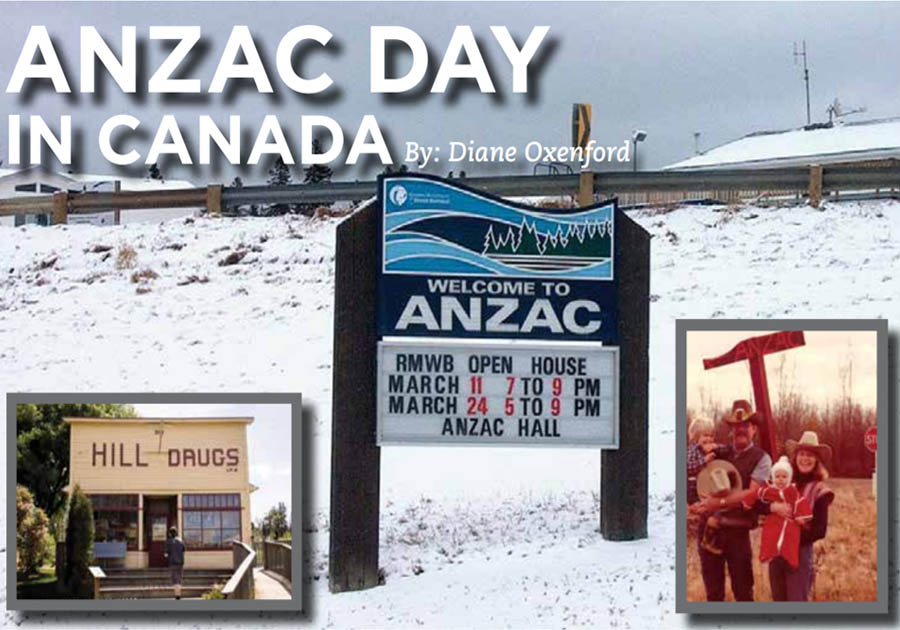The observances of Anzac Day here this year have taken my memory back to when we moved to Ft McMurray in northern Alberta Province in Canada many years ago. You can imagine my surprise when I found a small hamlet some 35km south of Ft McMurray was named Anzac. No one seemed to know how that hamlet got its name. There was no obvious Australian or New Zealand connection there. The residents of Anzac were primarily First Nations people. Hence some suggested that maybe “Anzac” was an Indian name. As a result, how that hamlet got its name remained a mystery.
Sometime after our first visit to Anzac, I was in Hill Drugs (the local pharmacy) when an insistent infant had to be fed. So I found a chair and retired to a quiet corner. No sooner had I settled down when Walter Hill drew up another chair to chat. Walter liked to chat. He had served in France with the Canadian forces in World War 1 and had moved to Ft McMurray with his new bride Gladys in 1922 to work in the newly established pharmacy. Walter took over the pharmacy some years later and stayed there until he turned it over to his son Ken in the 1980s. He and Gladys retired in Ft McMurray and their grandson David carries on the family’s pharmacy tradition in Ft McMurray today.
Walter quickly picked up my accent and just as quickly proceeded to tell me about his Australian connections and how the local village of Anzac got its name. After World War 1, the Alberta Government initiated several railways to northern outposts in Alberta including Ft McMurray. The Ft McMurray railroad was completed in 1925 and this allowed heavy freight to be moved north of the large set of rapids on the Athabasca River south of the township. That freight could then be offloaded onto barges and taken north on the Athabasca River to northern villages like Ft Chipewyan, Hay River and Norman Wells and even out to the Arctic Ocean.
Walter said that the railroad had reached the area south of Ft McMurray in the spring of 1924 and a decision had been made to install a siding there to service those local villages.
According to Walter, the bureaucrats in charge of naming these sidings had no imagination and had given them the most uninteresting names. So he had been helping by suggesting more appropriate names. It was April 1924 when the railroad was approaching the Anzac area and Walter remembered the many Anzacs he had fought within France in WWI. He remembered that they observed something they called “Anzac Day” in the trenches in honour of those who died in the “pasting” (Walter’s words) they had taken in Gallipoli. When Walter suggested the new siding be named Anzac in honour of the Anzacs he had known in France, that suggestion was accepted by the authorities.
Barry Clark’s article, “Bribie link to first ANZAC DAY” (The Bribie Islander, April 23) on the origins of the observance of Anzac Day, shows that Anzac Day was first celebrated in Brisbane (and probably Australia) in 1916 – the first year after the Gallipoli landings.
Walter Hill’s recollections would suggest that in faraway France, this special day in Australian history was observed there that year as well.
